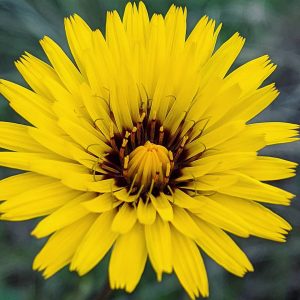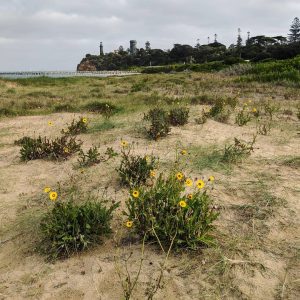False Sowthistle (Reichardia tingitana), a fancy, sand- and salt-loving yellow aster from the Mediterranean and Middle East.
A plant of coastal dunes and saline deserts in its home range, with only limited reported use in traditional medicine, the method of False Sowthistle’s introduction in Australia does not appear to have received past comment. Ships’ ballast is a likely culprit, but I am not aware of any specific evidence to this effect, and the plant’s arrival appears to have gone generally unobserved in newspapers of the day.
In Australia, False Sowthistle was first recorded in South Australia in 1923, collected from the dunes of Adelaide’s coastal suburbs. By 1944 the plant had shown up in WA at Geraldton, where it had either been independently introduced in ballast from the Mediterranean or redeposited by domestic shipping from Adelaide. By the 1950s the plant succeeded in making the jump from the Adelaide strand to SA’s north-west Riverland and south-west coast; by 1962 it had crossed the border and established in Victoria in the country west of Mildura.
In Victoria, False Sowthistle is now extensively established on sandy surface geology throughout the state’s north-west. The species also occupies one beachhead within the Melbourne metropolitan’s extended vacation and logistics hinterland: on the dunes around Queenscliff, where it was first collected in 1989. It has also been recorded once on Point Nepean on the other side of the Rip.
The apparently recent date of arrival at Queenscliff and that site’s distance from any other known colony is challenging; it is hard not to speculate that the plant may have been introduced in the construction of nearby upgrades to the ferry pier and other infrastructure during the c. 1980s.
View Original Post on Instagram
Search for information about Reichardia tingitana in the Flora of Victoria
View information and occurrences of Reichardia tingitana on the Atlas of Living Australia











